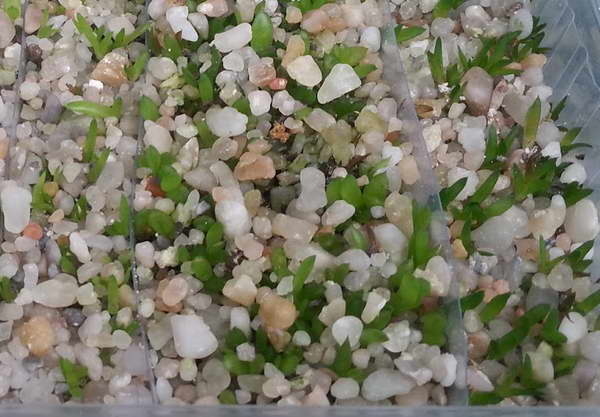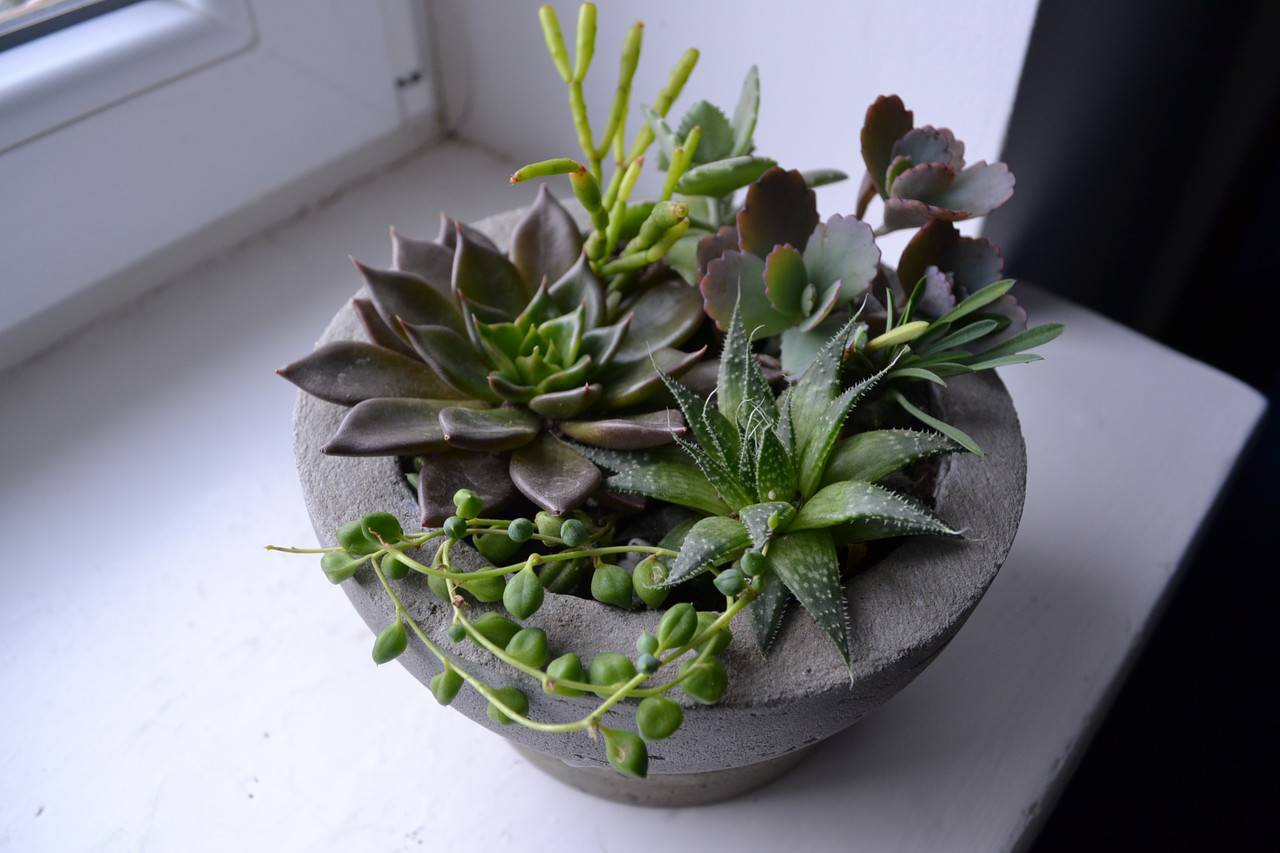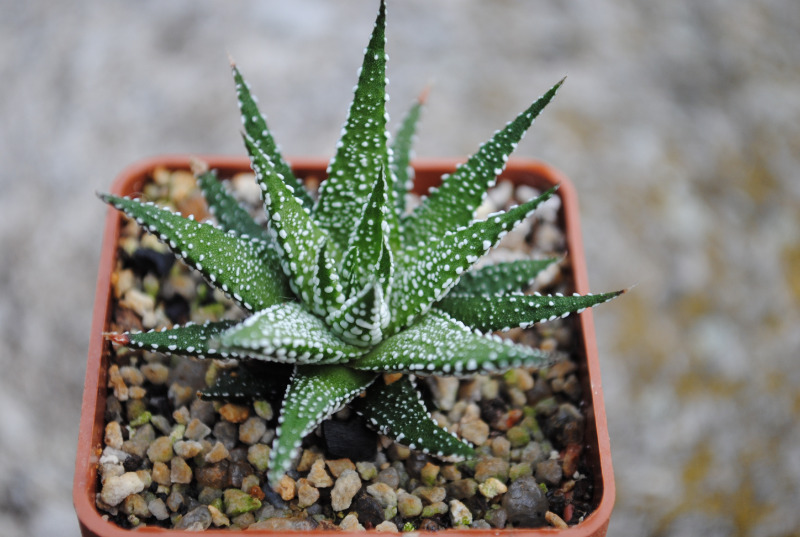This plant can often be found in homes and offices, but few people know its real name, which was formed on behalf of the English botanist Adrian Haworth. Contrary to popular belief, Haworthia is not related to cacti, although some of its species are "armed" with thorns, thorns or growths similar to them. This is an exotic plant, but patient and capricious, and also beautiful. And to have it at home is at least for this reason.
Content
What is remarkable about the plant
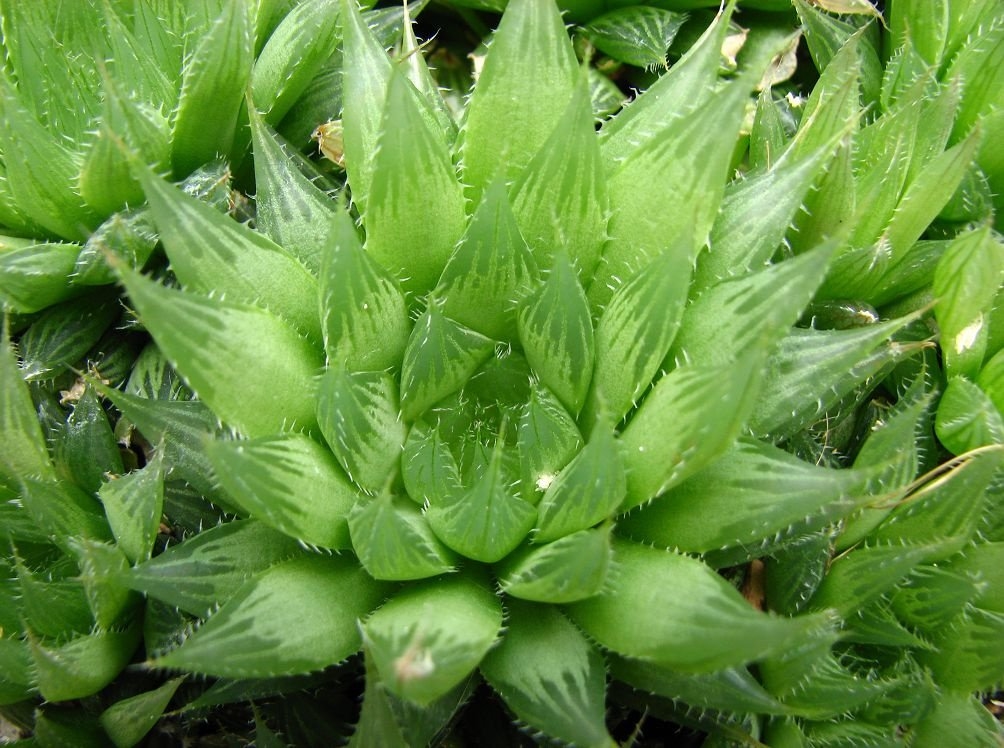
Before starting its journey across continents, countries, cities and window sills, Haworthia grew in South Africa. There she managed to adapt to any conditions - she felt great both on the bare rocky slopes, and in the middle of the boundless sands, and in the company of tough, sun-dried grass.
By its nature, this plant is perennial. It develops so slowly that it can live up to 20 years. During this time, Haworthia gives birth to many children, which grow around, covering the soil with a dense carpet. At home, young shoots are most often transplanted into separate containers.
Types and varieties with photos
Not all types of haworthia do well in the microclimate that people create in residential and office premises. At the moment, about 70 varieties and varieties have been cultivated, and due to their decorativeness, the following have gained the greatest popularity:
Haworthia Retusa
It fully justifies its second name - blunted, since its triangular fleshy leaves look as if the tops were cut off from them. If there is a lack of lighting, it changes color to reddish.

Scaphoid (Cymbiformis)
It is easily recognizable by the characteristic appearance of the leaves, their bright green color and the presence of translucent "windows" on the entire surface. The skin of the plant is glossy, and the wart-like growths that are characteristic of most haworthia are rarely found. When blooming, it releases a long arrow with many small white flowers.
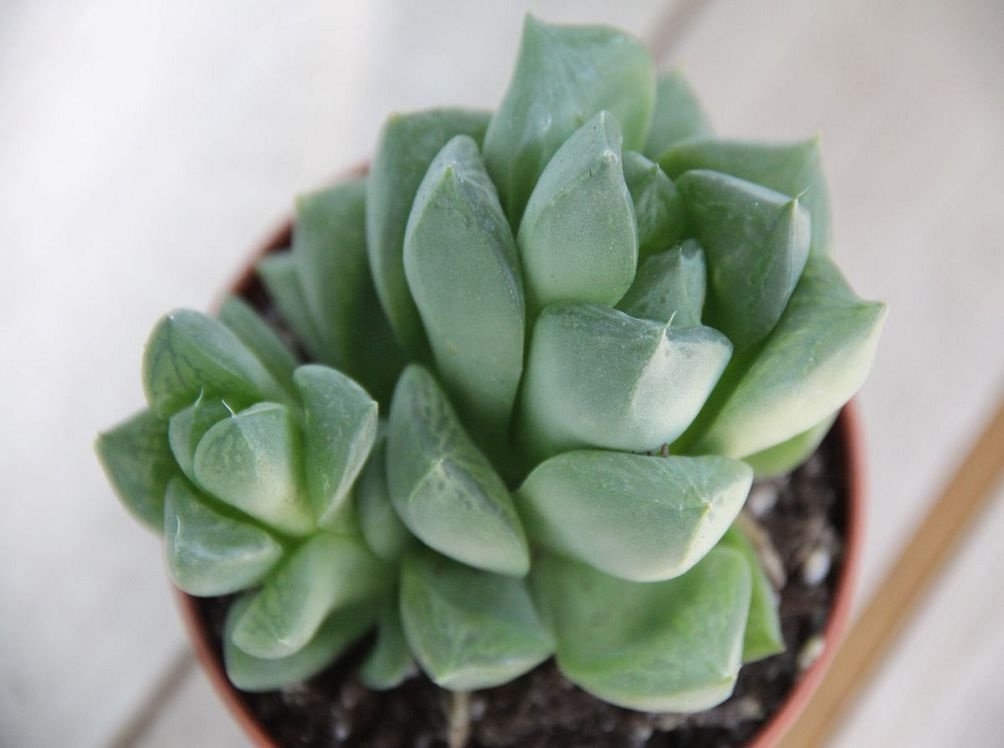
Pearl
It got its name from the small white formations that dot the edges of the leaves. There is a thorn at the top of each leaf. The flowers are greenish and appear on racemose inflorescences.
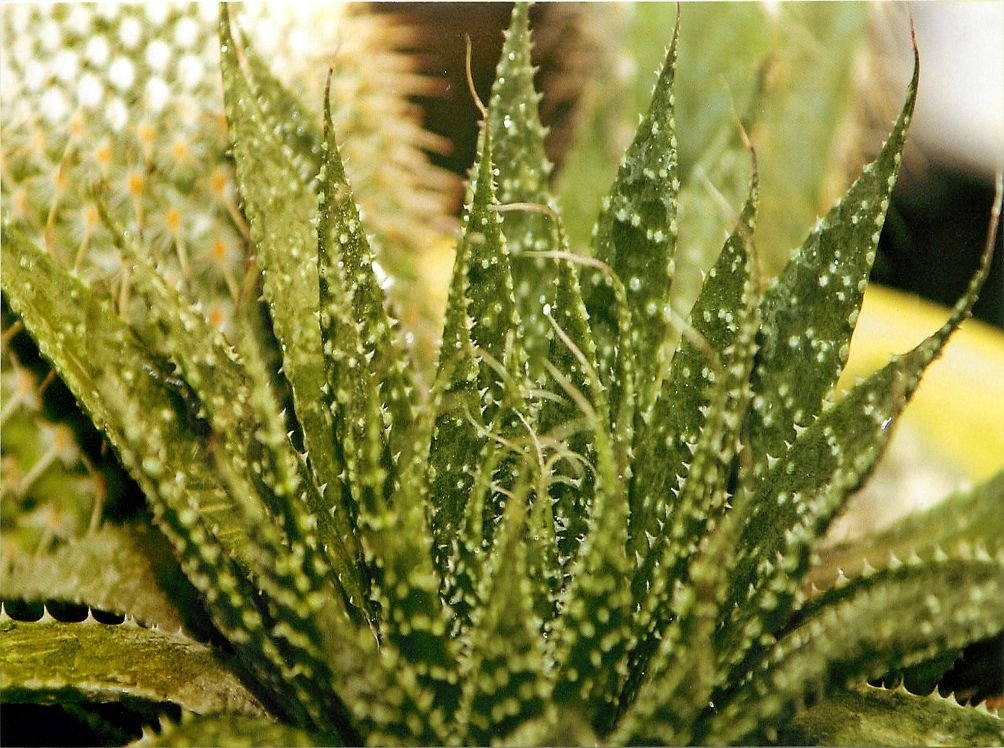
Concolor
One of the varieties of striped haworthia. It is characterized by thin, barely visible stripes on the skin.
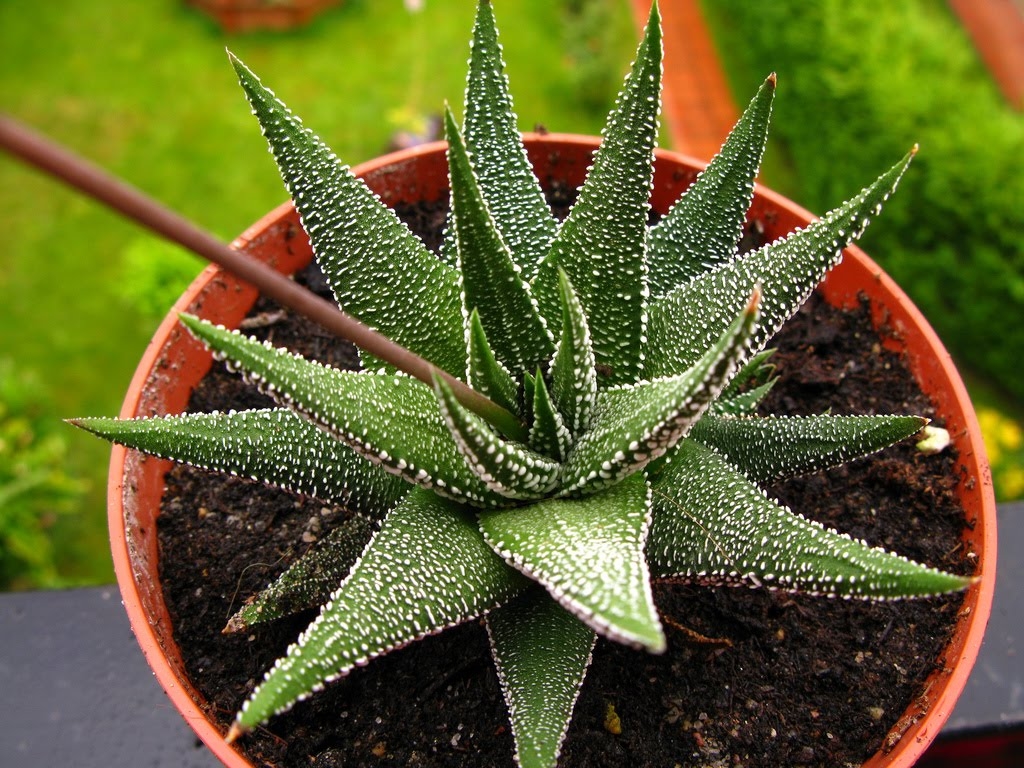
Haworthia Reindward
It reaches a height of 15 cm. It has white growths on the leaves, which disappear with an excess of light, and is distinguished by the absence of a basal rosette. Peduncle 1 m long is crowned with racemose inflorescences of lime shade. To create a beautiful composition, several such plants are planted in one container.
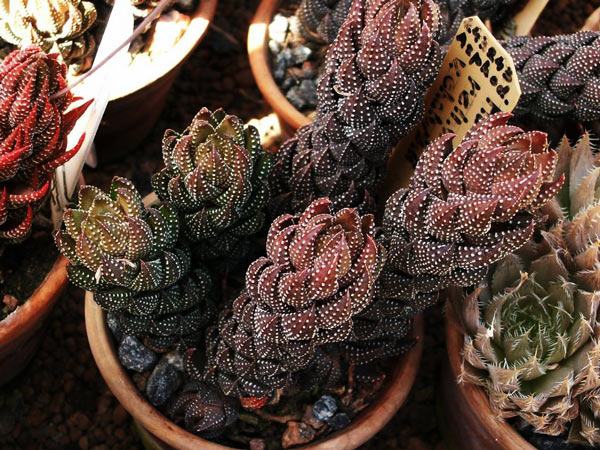
Izv silty
It is characterized by leaves concave at the top and convex at the bottom, the entire surface of which is covered with small white pimples.Color - dark green, juicy, saturated.
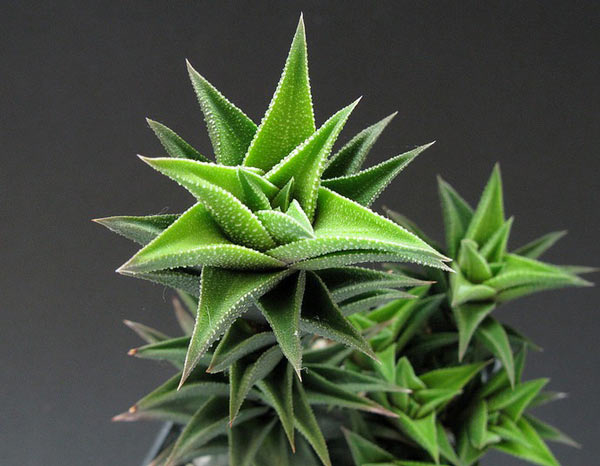
Drawn (Attenuata)
It looks like a striped one, but looks less impressive. The leaves are striped, long and narrow, directed vertically; if you look closely, you can distinguish dark green and black specks on them.

Chopped off
The plant looks like it has cut off the top of the leaves, hence the name of the species. The leaves are located not in a circle, but in one plane, forming two rows. The skin is dark green, smooth; variegated plants have vertical white stripes.
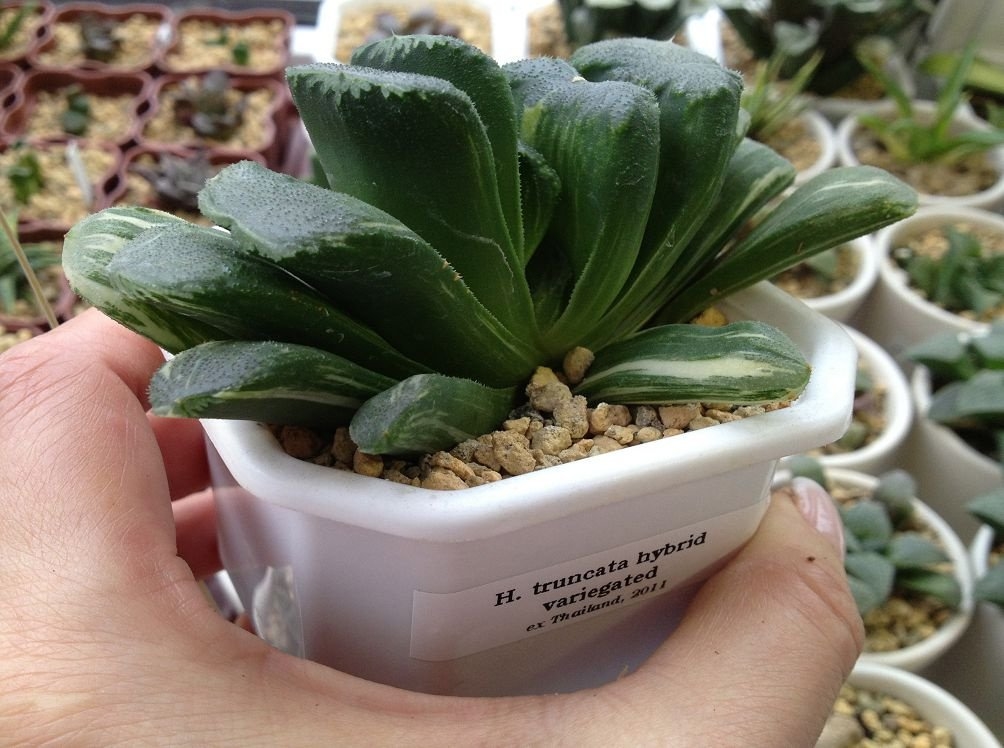
Terkovidnaya
It is very similar to pearl, but differs from it in thinner and narrower pointed leaves. In large numbers, they have growths located chaotically.
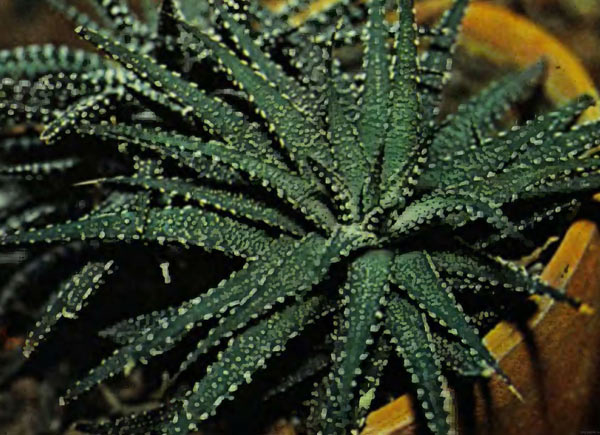
Maugani
Its leaves are cylindrical and vertical. At the top of each leaf, which looks like a sawn stump, there is a transparent window, which is designed so that the sun's rays can penetrate into the plant. This ensures photosynthesis during extreme heat and drought, when Haworthia almost completely "buries" itself in the ground.
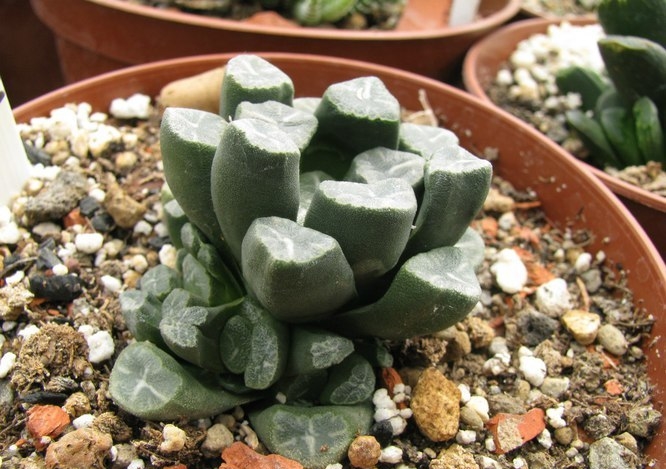
Haworthia Cooper
You can recognize it by a spherical rosette consisting of bluish-green leaves, the edges of which are covered with long outgrowths, similar to cilia. Above, the leaves are narrowed, below - scaphoid.

Lymphoid
To the touch, this plant is tough, hard, without relief on the leaf plates. The stripes on the inside and outside are mirrored. Variegated haworthia of this species look very elegant due to wide bright yellow longitudinal stripes.
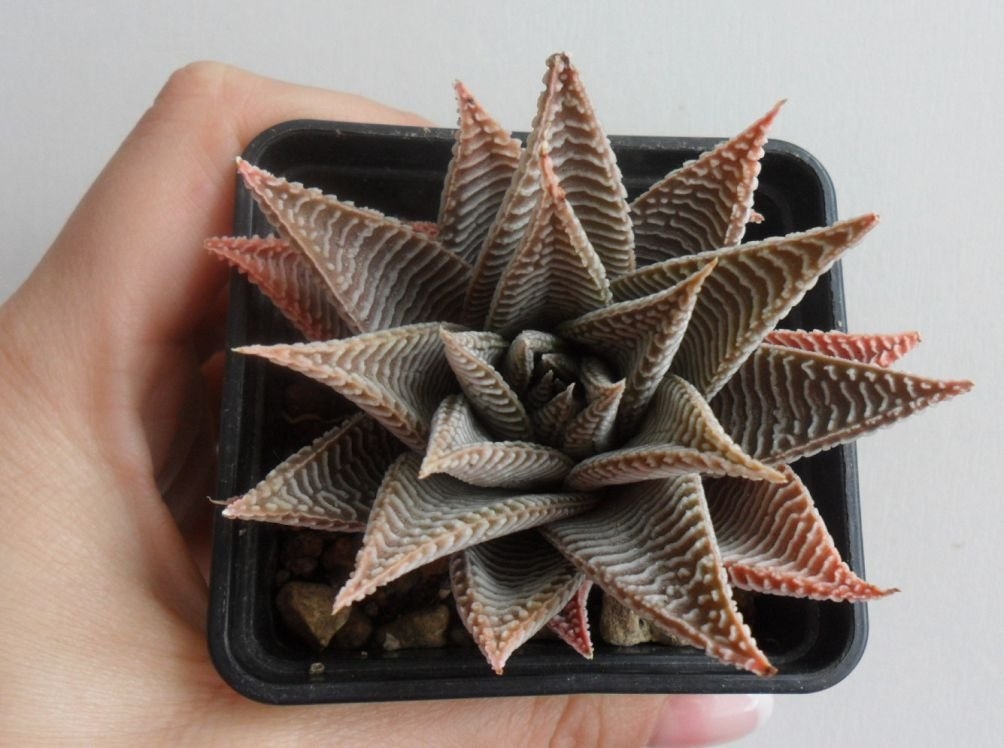
Fasciata
Otherwise, this species is called striped, since its main decoration is white stripes that stand out against the background of bright green leaves. In domestic culture, the most commonly grown varieties of striped haworthia are Big Ben and Concolor.
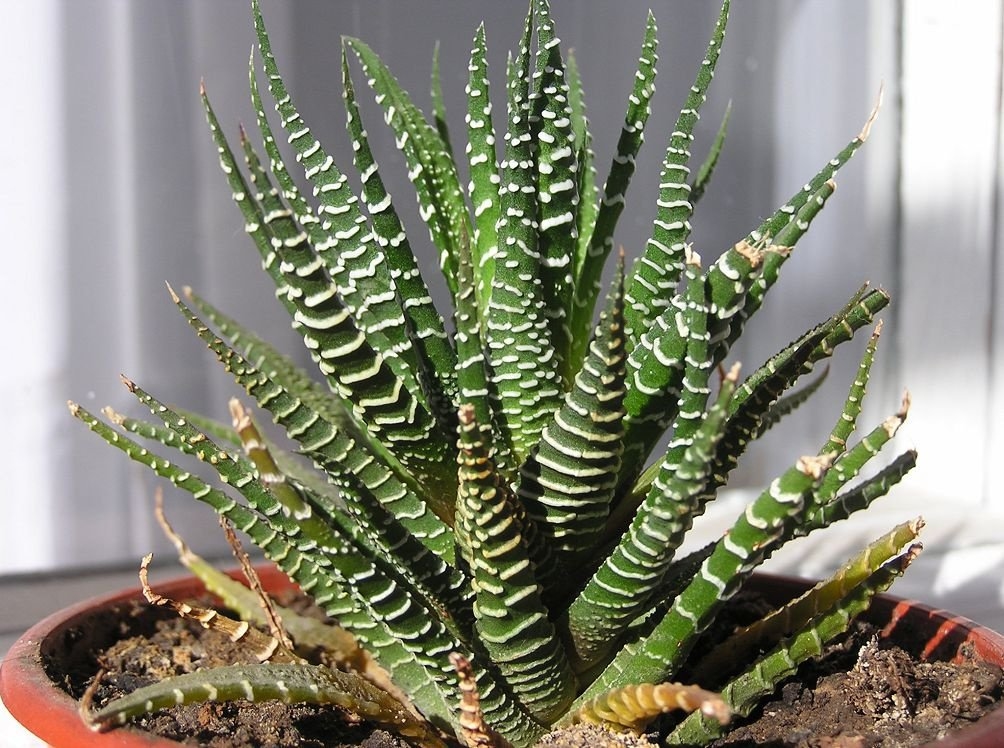
Home care
Haworthia is a true Spartan among indoor plants. She is completely unassuming and will easily survive the lack of watering if her owners go on vacation for a month or two. She does not need any special temperature regime or special soil mixtures. However, she will gratefully take care of herself and will become more beautiful day by day if you provide her with the most optimal living conditions, especially since caring for Hawortia at home will not take much time.
Containment Procedures: Table 1
They are the same for all types and varieties of Haworthia.
| Conditions of detention | Summer | Winter | |
| Lighting | Throughout the year, the plant needs a lot of light, so it should be placed in the east or west of the house. If you put a flower on a windowsill from the north side, it will need additional lighting; otherwise, the leaves will lose their former beauty and become pale, unsaturated. On the south side, Hawortia should be protected from the scorching rays of the sun passing through the window glass | ||
| Temperature | Haworthia easily tolerates any heat, but the thermometer readings at the level of + 25… 28 ° C are most comfortable for it. At night, the temperature should be 5-8 degrees lower | The plant is dormant. Comfortable temperature - + 15 ... 17 0С | |
| Airing | It is recommended to keep the flower pot outdoors (balcony, terrace), avoiding drafts | You can not place the Hawortia near a wide open window or take it out into the street. If the upper transom is opened for ventilation, the plant can be left on the windowsill. | |
| Air humidity | This parameter does not affect the growth and vitality of the flower in any way. Haworthia does not need spraying, moreover, they can harm it, provoking the development of rot | ||
Reproduction
There are three ways to propagate this plant. However, not all of them are equally simple and effective.
Cuttings
It is used for those types of haworthia that form few daughter outlets, or if you need to get many seedlings from one plant in a short time.

To get cuttings, proceed as follows:
- A large leaf not damaged by diseases is separated from the bottom of the plant.In no case should you try to break it off; it is better to use a clean, sharp knife or a thin silk thread (the process is similar to cutting a biscuit with threads).
- Sections on both the mother plant and the cuttings are smeared with a fungicidal paste or sprayed with a solution of any drug effective against fungi. The solution is prepared according to the instructions on the package.
- Sprinkle the sections with activated carbon crushed into dust and leave them outdoors in a room with moderate humidity for 2-3 days.
- Prepare containers for disembarkation by filling them with clean, roasted sand. It must be well moisturized.
- Stick the leaves into the sand. The container is not covered or hidden in a dark place; it must be in conditions with the same illumination and air humidity under which adult plants develop.
- After 25 days, the first watering is carried out. To do this, water is poured from a syringe or pipette along the edges of the container and between the cuttings.
As a rule, the roots of cuttings appear a month after planting, but there are also varieties that require up to six months for this.
For the following spring, successfully rooted plants can be divided into individual pots.
Division
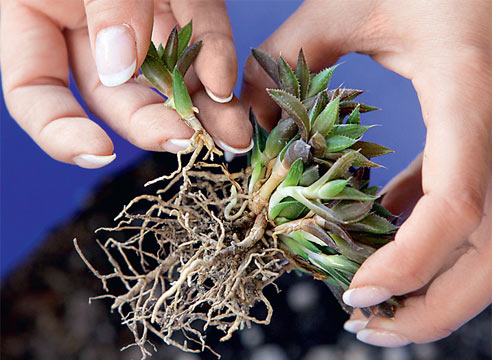
Adult haworthia constantly form babies - lateral rosettes that already have a developed root system. For reproduction, it is enough to separate the plants during transplantation and plant them in different containers.
To separate the mother flower from the daughter ones, it is worth using a clean knife or blade, leaving each plant with the number of roots that is commensurate with the size of its aboveground part. Slices should be sprinkled with activated charcoal or any available fungicide.
Sowing seeds
Haworthia seeds are rare on the open market, so you can get them either by collecting from your own plant, or by contacting people who are breeding new varieties. After the cherished seeds are in your hands, it's time to start sowing them:
- To begin with, you need to prepare a container filled with wet sand or soft, airy, porous soil, which will not retain moisture for a long time, but, when dried, turn into stone.
- Spread the seeds on the surface of the substrate.
- Cover the container with a transparent lid or wrap it with cling film, and then put it in a bright and warm place. If the temperature is below + 20… 25 ºC, seedlings may not appear.
Seed germination is low, therefore, to obtain the required number of seedlings, 6-7 times more seed will be needed.
It is important to remember that it is impossible to grow haworthia from seeds with precise varietal characteristics. This breeding method makes sense only within the framework of breeding work.
Planting and transplanting
Before planting or transplanting Haworthia, you need to prepare the correct soil and pot.
In its natural environment, this plant lives in areas with rocky soils that have a neutral or slightly alkaline reaction. The problem with most ready-made soils sold in stores is that their reaction is biased towards acidification, the same applies to special substrates for succulents. Therefore, it is better to prepare the soil mixture yourself. For this you will need:
- coarse sand - 3 parts;
- clay - 1 part;
- broken shell rock - 2 parts;
- fine gravel - 3 parts;
- ordinary soil with a neutral pH level, free of plant residues and living organisms - 3 parts.
You can check the acid-base balance of the land used (as well as the purchased substrate) using special test strips, popularly called litmus paper. It is enough to stir a handful of earth in a glass of water and lower the strip there, and then compare its color with the scale presented on the package.
As for the pot, it should be round and only slightly exceed the size of the plant's root system. In rectangular containers, the risk of root decay increases.It is advisable to choose pots made of unfired ceramics, they heat up less in the sun, promote the evaporation of excess moisture and have air permeability.
As a rule, haworthia is transplanted once a year, in the spring, but sometimes it needs an emergency transplant (for example, when the roots are affected by rot, or mold has appeared on the surface of the soil). In a conventional transplant, part of the earthen coma is removed, in other cases, the roots are completely cleaned of the substrate.
Top dressing
Haworthia will grow well without feeding - it is one of those plants that is better to underfeed than overfeed. Nevertheless, in order to create more comfortable conditions for it, you can use granular complex fertilizers for succulents, applying them to the soil in the quantities recommended by the manufacturer. They dissolve and release nutrients only when the substrate is wet, and since the haworthia is rarely and little watered, the likelihood of an excess of certain elements is reduced to zero.

If granular fertilizers are not available for some reason, regular liquid fertilizers will do. They need to be applied at half the dosage of the one indicated on the package, once every 3-4 weeks. It is best to do this at the same time as watering.
In winter, top dressing cannot be carried out.
Watering
The main condition for watering is that the soil must completely dry out after the previous moistening. When exactly this happens depends on many factors (season of the year, room temperature, substrate density, etc.). On average, in hot summer watering can be carried out every 10 days, and in winter - no more than once every one and a half months.
Since Haworthia easily tolerates a six to eight-week drought, you can observe this interval year-round, interspersed with very abundant watering (water should go through the entire thickness of the soil and spill into the pan; half an hour later, you can drain the remaining liquid).
Care errors: table 2
Although Haworthia is unassuming to care for, sometimes the owners neglect even the minimum recommendations for its maintenance. In such cases, you can face a number of problems:
| Problem | Cause | Decision |
| The plant wilts, the leaves stretch out and become lethargic, soft | Lack of lighting, which provoked a violation of the processes of photosynthesis | Move the plant pot to a windowsill or other place where enough light gets in. A week or two later, you can feed fertilizer for succulents in half the dose |
| Leaves wither | Haworthia is in a cold room or in a draft | Adjust the temperature regime in accordance with the needs of the plant and protect the pot from air movement |
| Leaves become colored (red, yellow), although this is not typical of the variety | Excess fertilizer | Haworthia needs to be transplanted into new soil. After that, it is not recommended to make top dressing for 2-3 months. |
| Brown spots appear on the leaves, the plant becomes wrinkled and takes on a darker shade | Sunburn | Remove the plant from the place where it is exposed to scorching sunlight. The likelihood of regeneration of old leaves depends on the degree of damage, but with proper care, haworthia will quickly grow new green mass. |
| Leaves become watery, lose their shape | Excess watering | It is worth replanting the plant in moderately dry soil and refraining from watering for several weeks. If it is not possible to transplant, you can leave the haworthia in the same soil, but moisturize it only after it has completely dried |
Flowering haworthia
In indoor conditions, this plant rarely produces a peduncle, but if this happens, experts recommend breaking it out or cutting it off at the budding stage. Blooming will not benefit Haworthia, but will only drain it. Some species die off after flowering, so there is a risk of irrevocably losing a valuable specimen.
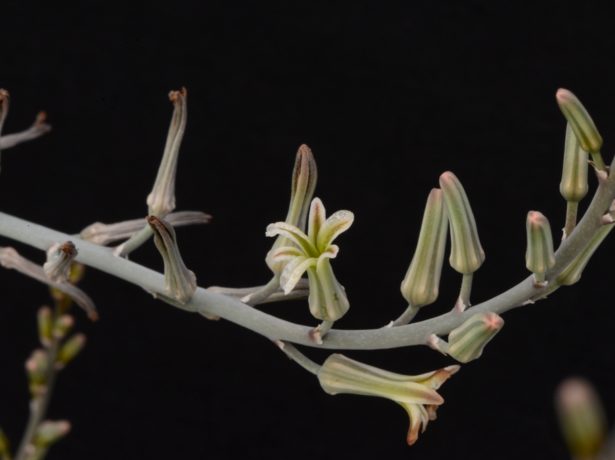
It should also be borne in mind that the flowers of Haworthia are nondescript, most often small and do not have a pleasant aroma. That is, it will not work to get aesthetic pleasure looking at them.Allowing flowering is only for the purpose of breeding, when you cannot do without collecting seeds.
Dormant period
All types of haworthia take several months a year for the so-called dormant period. At this time, the plants do not increase in growth, because their metabolism is slowed down. Since each species comes from a specific area with its own weather and climatic characteristics, the time when different Haworthies come to rest is significantly different in nature. At home, it is generally accepted that all varieties and species retire from October to March.
During the dormant period of Haworthia, it is necessary to provide coolness (about 15-17 degrees) and sufficient lighting. If the temperature is higher, the plant will stretch out and lose its decorative effect.
Despite the fact that the flower is in a "inhibited" state, it still needs to be watered occasionally and little by little, so that only the top ball of the soil is wetted. It is not recommended to carry out any manipulations (reproduction, transplantation).
Diseases and pests
Haworthia pests are not interested either as a food source or as a breeding ground. The only insects that sometimes settle in the rosettes of this plant are mealybugs. The fight against them is to thoroughly rinse the leaves with water with 72% laundry soap. After this procedure, you need to remove the remaining soap by rinsing the Hawortia under running water. If the treatment has not given results, you can apply drugs such as Actellik or Fitoverm, using them according to the instructions on the package.
Haworthia is not susceptible to disease. However, with excessive watering, root rot occurs, and spraying or excessive humidity in the air provokes leaf rot. In such cases, the plant can only be saved by removing damaged tissues and normalizing conditions.
Superstitious notes
It is believed that the slow growth of Haworthia is due to the presence of poor energy in the house. The plant takes away all the negativity on itself, thereby making the atmosphere more pleasant for a person.
Feng Shui experts recommend placing this flower in places where the family often gets together - in the kitchen, in the living room. This will help prevent discord and misunderstanding.
Haworthia is suitable for those who do not have a lot of time to take care of indoor plants, who often travel or travel on business trips. But despite its undemandingness, it has excellent decorative qualities; and due to the fact that there are many varieties of this flower, it will become an adornment of any interior.
